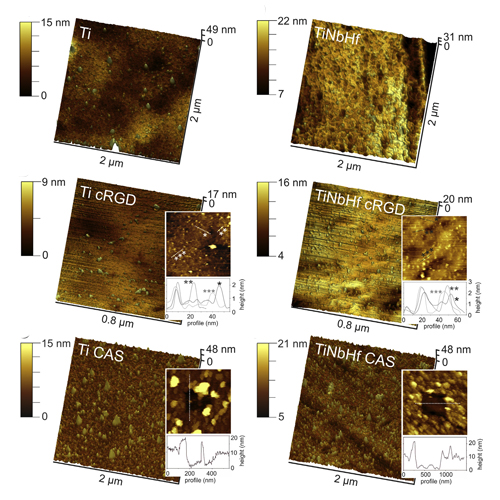Bioactive compounds immobilized on Ti and TiNbHf: AFM-basedinvestigations of biofunctionalization efficiency and cell adhesion
20-Oct-2015
Colloids and Surfaces B: Biointerfaces, Volume 136, Pages 704–711, doi:10.1016/j.colsurfb.2015.10.008
Implant materials require optimal biointegration, including strong and stable cell-material interactions from the early stages of implantation. Ti-based alloys with low elastic modulus are attracting a lot of interest for avoiding stress shielding, but their osseointegration potential is still very low. In this study, we report on how cell adhesion is influenced by linear RGD, cyclic RGD, and recombinant fibronectin fragment III8–10 coated on titanium versus a novel low-modulus TiNbHf alloy. The bioactive molecules were either physisorbed or covalently coupled to the substrates and their conformation on the surfaces was investigated with atomic force microscopy (AFM). The influence of the different bioactive coatings on the adhesion of rat mesenchymal stem cells was evaluated using cell culture assays and quantitatively analyzed at the single cell level by AFM-based single-cell force spectroscopy. Our results show that bioactive moieties, particularly fibronectin fragment III8–10, improve cell adhesion on titanium and TiNbHf and that the covalent tethering of such molecules provides the most promising strategy to biofunctionalize these materials. Therefore, the use of recombinant protein fragments is of high importance for improving the osseointegration potential of implant materials.











